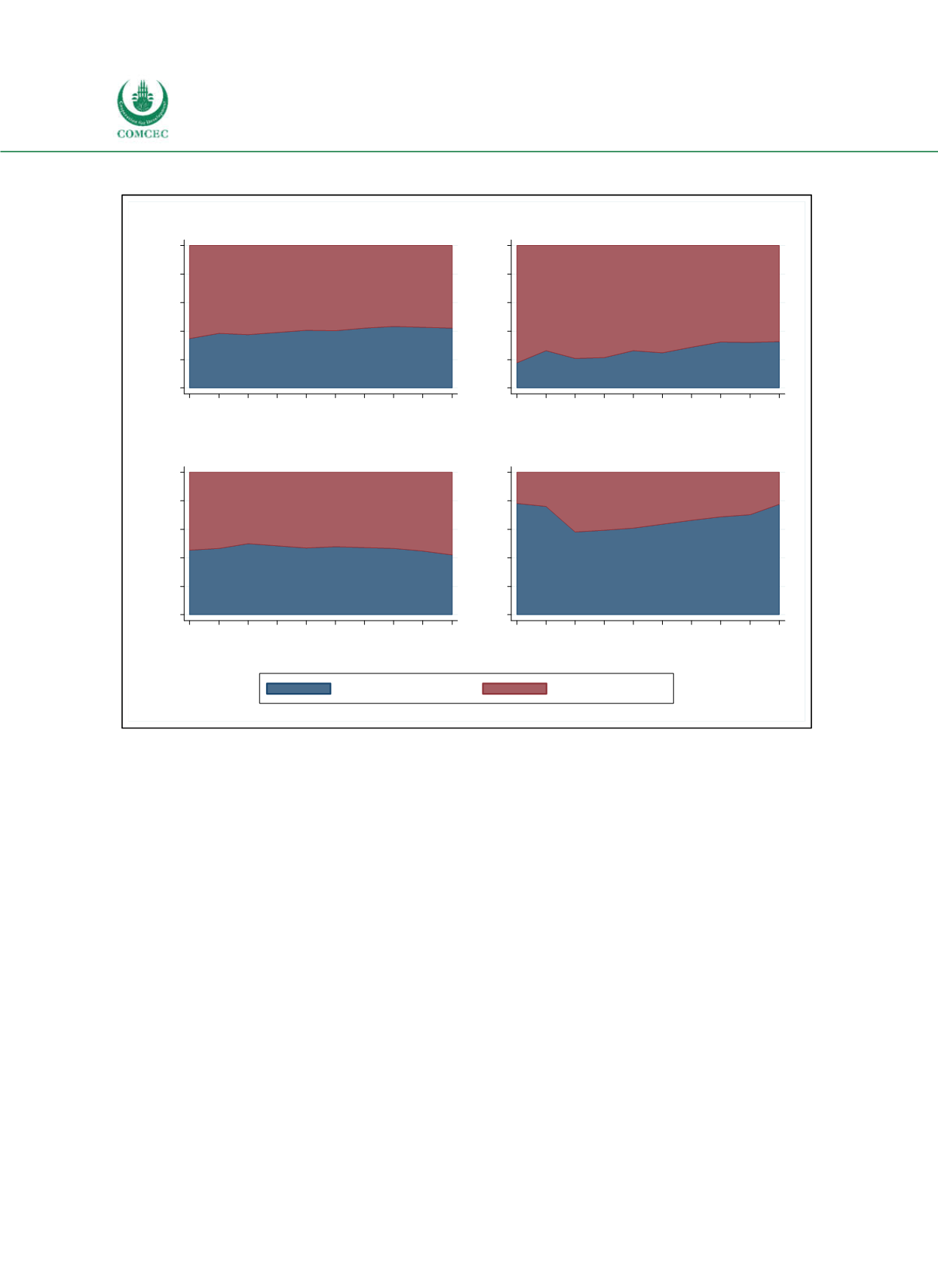

Improving Public Debt Management
In the OIC Member Countries
50
Figure 3-6: Creditor Structure of Public Debt in OIC Member Countries
Sources: IMF Country Reports (see 4.1 Case Studies), national central banks, national Ministries of Finance,
Moody’s, World Bank (2016) International Debt Statistics, calculations by the Ifo Institute.
OIC member countries differ considerably in their creditor structures. Figure 37 shows the
shares of domestic and external debt in the OIC member countries in 2015. All public debt in
Saudi Arabia was owed to domestic institutions, and in Bahrain, Egypt and Iran external public
debt accounted for less than 10% of total public debt in 2015. However, some of the countries
which were indebted mainly domestically plan to or already did access international debt
markets. For example, Saudi Arabia also introduced a debt management office, which was
responsible for the first international bond sale in 2016. Iran is planning to return to
international debt markets. On the other hand, several OIC countries rely heavily on external
debt. Afghanistan’s and Uzbekistan’s public debt comprised completely of external debt in
2015. In the Kyrgyz Republic, Djibouti, Mauretania and Azerbaijan less than 10% of total public
debt is domestic.
0
20
40
60
80
100
%
2006 2007 2008 2009 2010 2011 2012 2013 2014 2015
Year
All income levels
0
20
40
60
80
100
%
2006 2007 2008 2009 2010 2011 2012 2013 2014 2015
Year
Low income
0
20
40
60
80
100
%
2006 2007 2008 2009 2010 2011 2012 2013 2014 2015
Year
Middle income
0
20
40
60
80
100
%
2006 2007 2008 2009 2010 2011 2012 2013 2014 2015
Year
High income
Domestic creditors
External creditors
















